Disclosure: This article contains affiliate links. We may earn a commission from purchases at no extra cost to you, which helps our travel content.
When my husband Rahul and I first planned our Faroe Islands adventure with our three children in tow, the logistics seemed daunting. How exactly does one navigate 18 remote islands scattered across the North Atlantic? After meticulously planning our transportation budget (old habits die hard for this analyst!), we discovered that moving between these mystical islands involves a fascinating mix of modern engineering and traditional seafaring. From subsea tunnels that plunge beneath frigid waters to helicopters that offer million-dollar views for bus-fare prices, getting around the Faroes isn't just about reaching your destination—it's an integral part of the adventure itself. Our family's week-long summer journey taught us that with some strategic planning, even this seemingly complex archipelago becomes manageable for families seeking to experience one of Europe's most breathtaking yet under-visited destinations.
Understanding the Faroe Islands Layout
Before diving into transportation options, it's essential to understand the geography of this archipelago. The Faroe Islands consist of 18 major islands, of which 17 are inhabited. The islands form a rough triangle shape spanning about 113 km (70 miles) north-to-south and 75 km (47 miles) east-to-west.
The main island of Streymoy houses the capital Tórshavn and is your likely starting point as it's home to the main airport at Vágar. Most tourists concentrate their visits around the central islands (Streymoy, Eysturoy, Vágar, and Borðoy), which are conveniently connected by tunnels and bridges.
During our visit, I spent evenings poring over maps with my children, turning our journey planning into geography lessons. My eldest daughter Priya became our unofficial navigator, tracking our island-hopping progress on a large paper map we purchased at the airport.
The outer islands like Sandoy, Suðuroy, and the tiny eastern islands require ferries or helicopters to reach. While more challenging logistically, these less-visited islands offer the most authentic glimpse into traditional Faroese life and were the highlight of our trip.
One thing that surprised me: distances are deceptively short as the crow flies, but travel times can be significant due to winding roads, mountain passes, and ferry schedules. This is not a place where Google Maps estimates are particularly reliable!
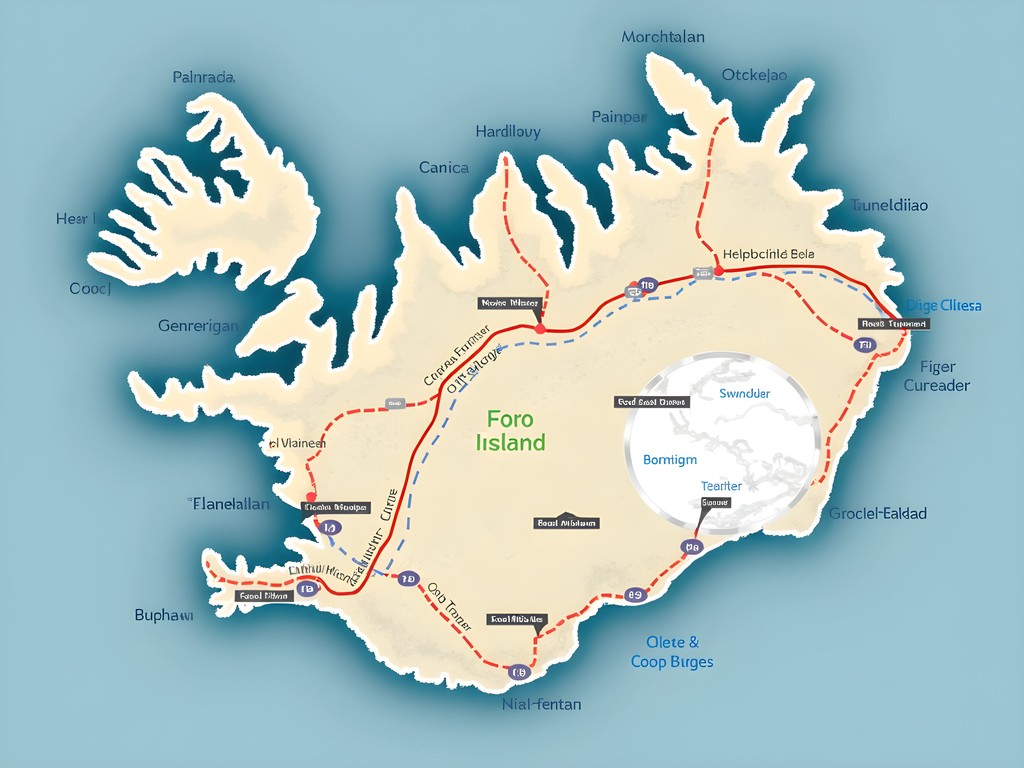
💡 Pro Tips
- Download the official Faroe Islands app for offline maps and transportation schedules
- Consider basing yourself in Tórshavn and taking day trips rather than constantly changing accommodations
- The islands form natural groups - plan your itinerary to explore one group at a time
The Extensive Tunnel Network
The Faroes' tunnel system is nothing short of engineering marvel. During our visit, my analytical side was thoroughly impressed by how this nation of just 50,000 people has constructed such ambitious infrastructure.
The subsea tunnel network forms the backbone of Faroese transportation, connecting the main islands without requiring ferries. There are currently three subsea tunnels:
- Vágatunnilin: Connecting Vágar (airport island) to Streymoy (main island)
- Norðoyatunnilin: Connecting Eysturoy to Borðoy (Klaksvík)
- Eysturoyartunnilin: The newest addition (opened December 2020) connecting Streymoy directly to Eysturoy
The Eysturoyartunnilin deserves special mention as it features the world's first underwater roundabout, illuminated by spectacular light art. My children were absolutely mesmerized by this underwater traffic circle, and we actually drove through it multiple times just for the experience!
Beyond the subsea tunnels, numerous mountain tunnels cut through the islands' imposing peaks. Some of these are quite narrow with passing places rather than two full lanes—a nerve-wracking experience for those unused to such roads.
All tunnels in the Faroes are toll roads, with fees ranging from 25-200 DKK per passage. To avoid constant stopping, I highly recommend renting a car with an automatic payment device or purchasing a tunnel pass at the airport. We opted for a portable GPS navigation device which proved invaluable as mobile reception can be spotty inside tunnels, and the local rental GPS wasn't very reliable.
One important note: the single-lane tunnels operate on a give-way system where cars must pull into designated passing places. Learn the protocol before entering these tunnels, as headlights in the distance indicate an approaching vehicle that may have right of way.

💡 Pro Tips
- Always keep headlights on in tunnels (legally required)
- If renting a car, confirm if tunnel fees are included or require separate payment
- The oldest tunnels are single-lane with passing places - check the protocol before entering
The Essential Ferry Network
Despite the impressive tunnel system, ferries remain vital for reaching many of the Faroe Islands. The national ferry company, SSL, operates regular services to the outer islands not connected by tunnels.
Our family's most memorable day involved taking the ferry to Kalsoy, known as 'the flute' for its thin shape and tunnel 'holes.' This island has no tunnels connecting it to other islands, making the ferry the only access point. The journey itself became one of my children's favorite memories—spotting seabirds, feeling the spray of the North Atlantic, and watching the dramatic coastlines slip by.
The main ferry routes include:
- Tórshavn to Suðuroy: The longest route (2 hours) connecting the capital to the southernmost island
- Gamlarætt (Streymoy) to Sandoy: A short 30-minute crossing
- Klaksvík to Kalsoy: A 20-minute journey to one of the most dramatic landscapes
- Tórshavn to Nólsoy: Just 20 minutes from the capital to a car-free island
Ferry tickets are reasonably priced, especially if traveling on foot. Vehicle transport costs considerably more, which factored into our decision to rent separate cars on certain islands rather than bringing one vehicle everywhere.
Before our trip, I created a detailed spreadsheet comparing the costs of taking our rental car on ferries versus renting locally on each island. For Suðuroy and Sandoy, bringing our car made sense. For smaller islands like Kalsoy, we opted to explore on foot, which worked perfectly given the limited road network.
Unlike the well-oiled transportation systems of mainland Europe, Faroese ferries operate on island time and weather conditions. During our summer visit, services were reliable, but winter travelers should expect frequent cancellations. I packed our trusty waterproof dry bag which kept our gear protected during the occasionally splashy crossings.
One budget tip that saved us significantly: if you're planning multiple ferry journeys, ask about multi-journey passes at the first terminal you visit.
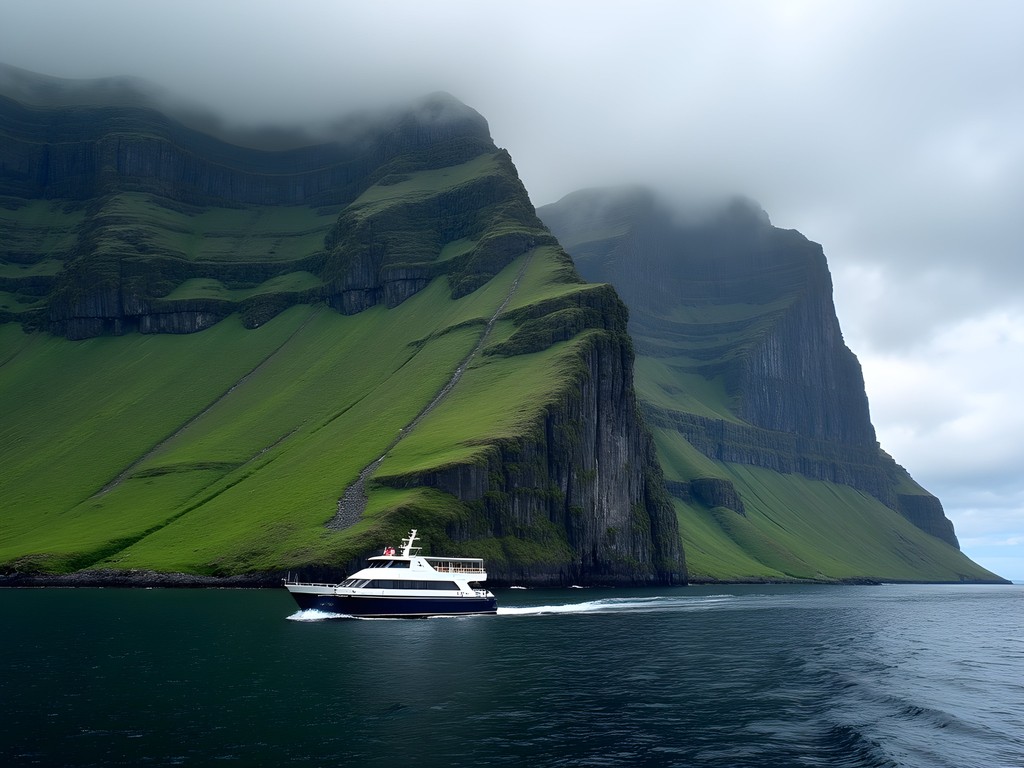
💡 Pro Tips
- Book vehicle spaces on popular routes in advance, especially in high season
- Check the ferry schedule the night before as times can change based on conditions
- Arrive at least 15 minutes early for foot passenger tickets, 30+ minutes with a vehicle
The World's Most Affordable Scenic Helicopter Service
Perhaps the most extraordinary transportation option in the Faroes is also one of its best-kept secrets: the heavily subsidized helicopter service operated by Atlantic Airways. Unlike helicopter rides elsewhere that cost hundreds or thousands of dollars, these flights are priced similarly to bus fares as they're considered public transportation for locals.
When I first told Rahul about taking our children on a helicopter, he assumed I'd blown our budget completely. His expression when I revealed the cost—around 215-300 DKK (roughly $32-45 USD) per person—was priceless.
The helicopter service connects Tórshavn with the smaller islands of Koltur, Stóra Dímun, Skúvoy, Svínoy, and Fugloy, some of which have populations of fewer than 20 people. The views are absolutely spectacular—you'll soar over dramatic cliffs, emerald valleys, and isolated villages clinging to mountainsides.
However, there's an important ethical consideration: as these flights are subsidized for locals' transportation needs, tourists should only book one-way helicopter journeys and return by ferry. This unwritten rule ensures locals always have access to necessary transportation.
Booking requires advance planning. The schedule is released only 2-3 months in advance, and seats sell out quickly, especially in summer. I set calendar reminders and booked the moment reservations opened. Our flight from Tórshavn to Svínoy provided views that would have cost thousands in places like New Zealand or Hawaii.
For photographers, this is an absolute dream opportunity. I brought my mirrorless camera with a polarizing filter to cut glare through the helicopter windows. The resulting images became the centerpiece of our family travel album.
One unexpected benefit: the helicopter service often reaches islands when ferries are canceled due to rough seas, making it both the most scenic and most reliable option in poor weather.

💡 Pro Tips
- Book exactly 2 months in advance when schedules are released
- Only book one-way helicopter journeys and return by ferry (ethical tourism)
- Sit on the right side when flying north and left side when flying south for the best views
Planning Multi-Island Itineraries
Crafting a logical itinerary for the Faroe Islands requires balancing ambition with practicality. After much spreadsheet work (occupational hazard of a budget analyst!), our family settled on a hub-and-spoke approach that minimized accommodation changes while maximizing island coverage.
We based ourselves in three strategic locations:
-
Tórshavn (4 nights): The capital city on Streymoy served as our main hub, allowing day trips to Vágar, Eysturoy, and Nólsoy.
-
Klaksvík (2 nights): The second-largest town gave us easy access to the northern islands of Kalsoy, Kunoy, and Borðoy.
-
Tvøroyri on Suðuroy (1 night): The southernmost island required an overnight stay due to limited ferry schedules.
This approach meant our children had stable bases rather than constant packing and unpacking. It also allowed us to book better accommodations since longer stays often qualify for discounts.
When planning your own itinerary, I recommend starting with a transportation map and working backward. First, identify which islands require overnight stays due to limited connections, then fill in day trips from your main bases.
For families like ours, I suggest investing in a travel planner where you can map out transportation connections alongside accommodation details. This saved us multiple times when ferry schedules changed or weather altered our plans.
One strategy that worked exceptionally well was alternating 'big travel days' with 'local exploration days.' After taking multiple ferries or a long drive through tunnels, we'd spend the next day exploring our immediate surroundings on foot. This rhythm prevented transportation fatigue, especially important with children.
Finally, build in buffer days. The Faroese have a saying that if you don't like the weather, wait five minutes. While somewhat true, bad weather can disrupt transportation for more than just minutes. Our flexible itinerary allowed us to swap days around when a ferry cancellation threatened to derail our plans.

💡 Pro Tips
- Create a hub-and-spoke itinerary rather than changing accommodation daily
- Always have a backup plan for weather-related cancellations
- Consider the 'hidden' time costs of loading/unloading cars on ferries when planning day trips
Budgeting for Transportation in the Faroes
As a budget analyst by profession, I approached our Faroe Islands transportation costs with perhaps more spreadsheets than the average traveler. However, this advance planning saved us nearly 30% on our transportation budget—money we happily redirected to experiencing local cuisine instead.
Here's a breakdown of what to expect cost-wise:
Car Rental: This will likely be your largest transportation expense. Expect to pay 700-1200 DKK ($100-175 USD) per day for a standard vehicle. The roads are excellent but narrow, so you don't need a 4WD unless visiting in winter. We booked through a local company rather than international agencies and saved significantly.
Tunnel Tolls: Budget approximately 300-500 DKK for a week of tunnel crossings if you're exploring multiple islands. The subsea tunnels are the most expensive (around 100-200 DKK per crossing), while the older mountain tunnels are cheaper or free.
Ferry Costs: Passenger fares are reasonable at 20-90 DKK per journey depending on distance. However, taking a vehicle on board significantly increases the cost (200-400 DKK). We calculated when it made financial sense to take our rental car versus going as foot passengers.
Helicopter Flights: The incredible helicopter service costs between 215-300 DKK per person for one-way journeys. While not cheap, this represents extraordinary value compared to scenic helicopter flights elsewhere in the world.
Public Buses: The red buses connect major towns and villages for just 20-30 DKK per journey. Coverage is limited but useful for certain routes, especially on the main islands.
One significant saving strategy we employed was purchasing the Múlakort travel card, which gave us unlimited travel on buses and certain ferries. For a family of five, this paid for itself within just three days.
I tracked our total transportation spending using the travel expense tracker which helped us make real-time adjustments to stay within our budget.
A final tip: many guesthouses and hotels offer free transportation to nearby hiking trails or attractions. We saved approximately 2000 DKK by taking advantage of these complimentary shuttles rather than driving ourselves to every location.
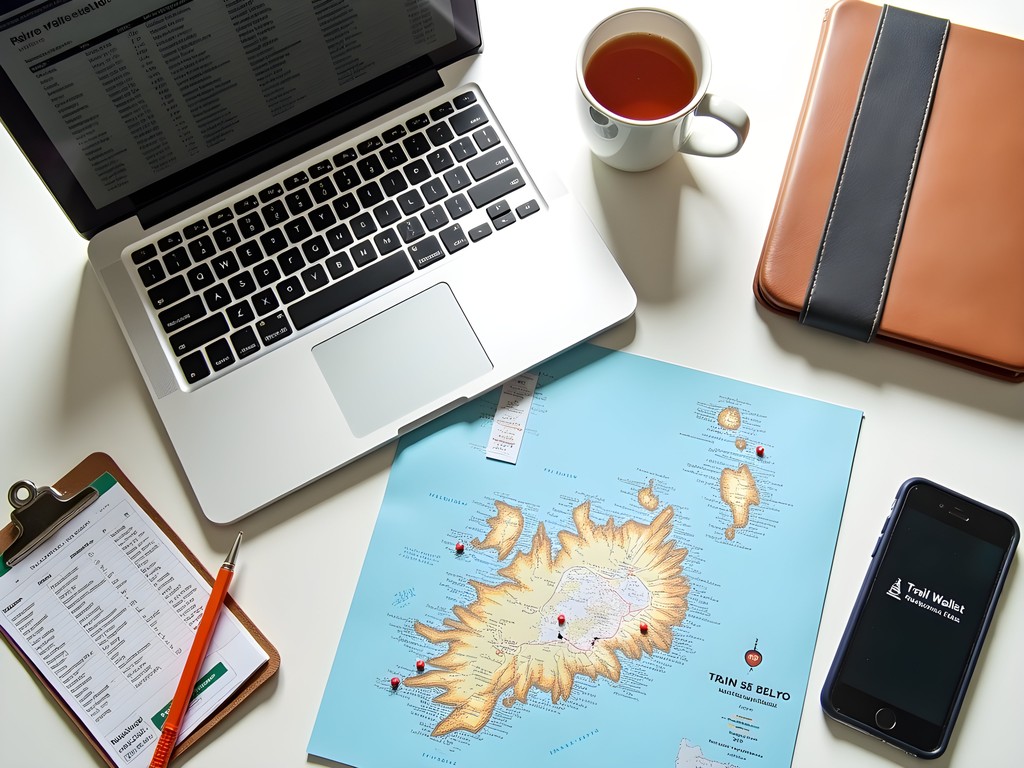
💡 Pro Tips
- The Múlakort travel card offers unlimited bus travel and discounts on some ferries
- Book car rentals from local companies for significant savings over international chains
- Some accommodations offer free shuttles to popular hiking trails - ask before booking taxis
Final Thoughts
Navigating the Faroe Islands may seem daunting at first glance, but this intricate transportation network is precisely what makes exploring this archipelago so magical. From driving through underwater tunnels to soaring over remote villages by helicopter, the journey truly becomes part of the destination. Our family's week-long adventure through these islands connected us not just to the breathtaking landscapes but to a way of life shaped by isolation and ingenuity. As you plan your own Faroese adventure, embrace the unique rhythm of island transportation—sometimes unhurried, occasionally unpredictable, but always unforgettable. The effort required to reach the Faroes' most remote corners ensures they remain pristine and uncrowded. As my daughter Priya noted while we waited for our ferry back from Kalsoy: 'The best places are never the easiest to reach, right Mom?' In the Faroe Islands, that wisdom certainly holds true.
✨ Key Takeaways
- Combine transportation methods strategically - tunnels for efficiency, ferries for experience, and helicopters for once-in-a-lifetime views
- Book helicopter journeys exactly when schedules are released (2 months in advance)
- Use Tórshavn as your main hub with 1-2 satellite accommodations for remote islands
- Build buffer days into your itinerary to account for weather disruptions
📋 Practical Information
Best Time to Visit
June to August (summer)
Budget Estimate
$150-250 per day per person (mid-range)
Recommended Duration
7-10 days
Difficulty Level
Advanced
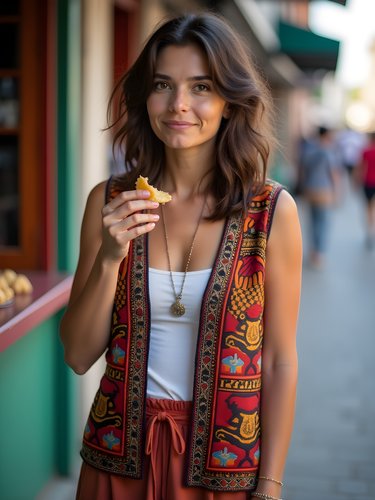

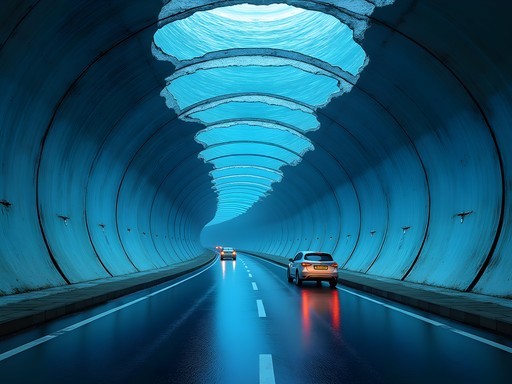
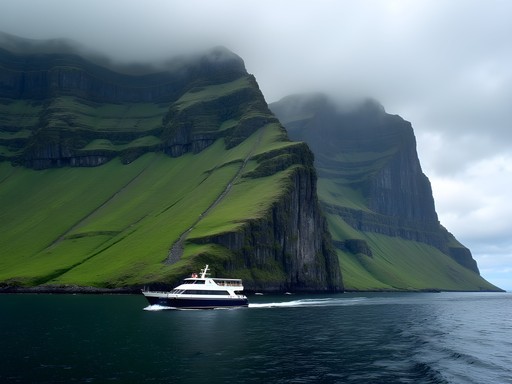













Comments
wanderbuddy
Great article! Quick question - were there any tunnels that made you nervous? I've read about some older one-lane tunnels that sound a bit scary. Also wondering if the ferries run year-round or if winter schedules are reduced?
Nicole Mohamed
The old tunnel to Gásadalur was definitely the most nerve-wracking - it's single-lane with small passing bays and minimal lighting. Take it slow and you'll be fine! Ferry schedules do reduce in winter, especially to smaller islands like Nólsoy and Fugloy. The Atlantic Airways website has up-to-date seasonal schedules.
Jean Wells
I visited the Faroes last year as a solo traveler and can confirm the transportation system is remarkably efficient. One tip I'd add: purchase the multiple-day travel card if you'll be using the bus system frequently - it saved me considerable money. The subsea tunnels were an unexpected highlight; there's something surreal about driving beneath the ocean floor. For those concerned about navigation, I found my offline GPS indispensable, as mobile coverage can be spotty between islands. The ferry from Syðradalur to Kalsoy often fills quickly in summer months - arriving 30-45 minutes early is advisable. Excellent breakdown of the options, Nicole!
wanderbuddy
Jean - did you feel the Faroes were doable as a solo traveler? I'm considering going alone this spring but wasn't sure about logistics. Did you rent a car?
Jean Wells
Absolutely doable solo! I rented a car for 5 days and used public transport for the rest. Driving was straightforward, and locals were incredibly helpful whenever I had questions. Just book accommodations early - options are limited!
sunnynomad8648
We just got back from the Faroes and your guide would have been so helpful! The tunnel system is incredible but a bit intimidating at first. We didn't realize how narrow some of them are - had to pull over a few times to let larger vehicles pass. The helicopter ride was the highlight of our trip though - only €20 per person from Tórshavn to Klaksvík and the views were INSANE. Pro tip for anyone going: bring a waterproof jacket even on sunny days. The weather changed so quickly when we were island hopping!
wildzone
Did you need cash for the tunnels or do they take cards everywhere?
sunnynomad8648
Everything was card-friendly! You can even pay tunnel tolls online after using them (within 3 days). Super convenient.
bluevibes
Those helicopter prices are insane! In a good way! Definitely adding this to my bucket list.
Douglas Bradley
Excellent breakdown of the transportation options! I'd add that the sub-sea tunnels are an engineering marvel - the Eysturoy tunnel with its underwater roundabout was particularly impressive. One thing travelers should note is that while Google Maps works for navigation, I found the offline maps incredibly useful when in areas with spotty service. Also worth mentioning that if you're a photographer, the helicopter rides offer unparalleled opportunities for aerial shots, but sit on the side away from the sun for best results. The ferry to Nólsoy gave me some of my best wildlife shots - puffins and seals if you're lucky!
adventurehero
Did you book the helicopter rides in advance or can you just show up? And how far ahead did you need to book the ferries?
Douglas Bradley
Not the author, but I was there last month - definitely book helicopters at least 2 weeks in advance as they fill up quickly, especially in summer. The Atlantic Airways website is straightforward for booking. Ferries between major islands can be booked just a day ahead, but if you're traveling to Kalsoy or some of the smaller islands during peak season, I'd recommend 3-4 days advance booking to be safe.
adventurehero
Thanks for the insider tip! Will plan accordingly.
hikingclimber
How kid-friendly were the ferries? Planning to visit with my 5-year-old next summer.
Nicole Mohamed
The ferries were great with kids! They have indoor seating areas where children can move around a bit, and the views keep them entertained. Just bring snacks and maybe a small activity for longer journeys. Our kids (4, 7, and 10) loved watching for birds and spotting other islands from the windows!
hikingclimber
That's so helpful, thanks! Will definitely pack some activities and snacks. Can't wait!
wildzone
Those helicopter rides look incredible! Definitely adding this to my bucket list for 2026.
mountainwanderer
This post couldn't have come at a better time! We're planning our trip to the Faroe Islands next summer with our two teenagers. The helicopter service sounds incredible - did you have to book far in advance? I'm wondering if it's realistic to count on getting seats for 4 people. Also curious about which islands you found most worth visiting with kids? Thanks for all the detailed info on the tunnels - I was worried about driving there but this makes it seem much more manageable!
Nicole Mohamed
Hi mountainwanderer! Yes, definitely book the helicopter at least 2 months ahead, especially for 4 people. The Atlantic Airways website opens bookings exactly 2 months before. For kids, Mykines (puffin island) was our family's favorite, followed by Kalsoy for the lighthouse hike. The driving is surprisingly easy - just take the one-lane tunnels slowly!
mountainwanderer
Thank you so much for the quick response! Will definitely set a reminder for the helicopter booking. Mykines is at the top of our list too!
sunnyguy
That shot of the helicopter landing on Mykines is stunning! Did you have to wait long for a return flight? I've heard they can get delayed pretty often.
Venture X
Premium card with 2X miles, $300 travel credit, Priority Pass